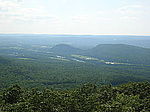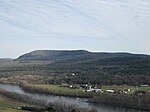Sunderland, Massachusetts
1713 establishments in the Province of Massachusetts BayMassachusetts populated places on the Connecticut RiverPopulated places established in 1713Springfield metropolitan area, MassachusettsSunderland, Massachusetts ... and 3 more
Towns in Franklin County, MassachusettsTowns in MassachusettsUse mdy dates from July 2023

Sunderland is a town in Franklin County, Massachusetts, United States, part of the Pioneer Valley. The population was 3,663 at the 2020 census. It is part of the Springfield, Massachusetts Metropolitan Statistical Area. Sunderland was first settled in 1713 and was officially incorporated in 1718. It was first known as Swampfield, a name which is now honored by Swampfield Road, but the name was changed to attract more residents. It was renamed in honor of Charles Spencer, the Earl of Sunderland. Historically, the land was largely used for farming. Before the incorporation of Leverett in 1774, that town was a part of Sunderland's territory.
Excerpt from the Wikipedia article Sunderland, Massachusetts (License: CC BY-SA 3.0, Authors, Images).Sunderland, Massachusetts
Amherst Road,
Geographical coordinates (GPS) Address Nearby Places Show on map
Geographical coordinates (GPS)
| Latitude | Longitude |
|---|---|
| N 42.466666666667 ° | E -72.579166666667 ° |
Address
Amherst Road 2
01375
Massachusetts, United States
Open on Google Maps








